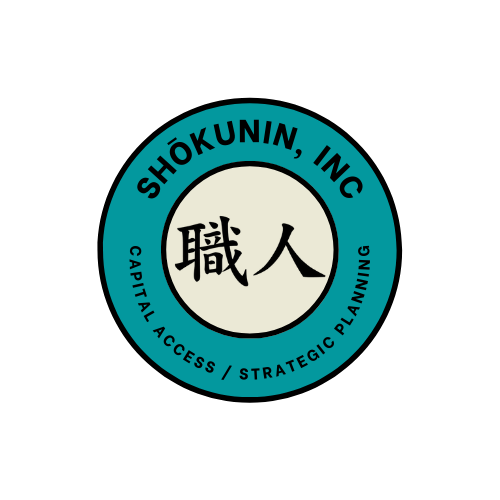If you’re planning to buy a building for your business, expand to a second location, or refinance an existing facility using an SBA 504 loan, pay close attention.
Starting June 1, 2025, updates to the SBA’s Standard Operating Procedure (SOP) go into effect—and they could impact everything from down payments to related-party transactions to what counts as owner-occupied space.
These changes affect how lenders underwrite 504 loans, what documentation is required, and what types of borrowers qualify. That means more scrutiny, not less—especially in gray areas like business expansions, tenant income, and real estate held in separate entities.
This article breaks down the most critical updates and what you should be doing right now if you’re eyeing a 504 loan.
Quick Refresher: What Is an SBA 504 Loan?
The SBA 504 loan is a long-term financing tool for businesses looking to acquire, construct, or renovate commercial real estate or heavy equipment. It’s designed for owner-users—businesses that will occupy at least 51% of the property they’re buying or improving.
Here’s the basic structure:
-
50% from a private lender (bank or non-bank lender)
-
40% from a Certified Development Company (CDC) backed by a debenture sold in the bond market
-
10% equity injection from the borrower
(15–20% if you’re a startup or buying a special-purpose property)
What’s Changing on June 1, 2025?
1. Tighter Oversight on Expansion Projects
In the past, if your business wanted to open a second location or expand to a new facility, you could still use SBA 504 financing—even if the new space didn’t immediately hit the 51% occupancy requirement. You could sign a letter of intent stating your intention to grow into the space within 12–24 months.
Now, those assumptions must be backed by financials.
Lenders and CDCs must:
-
Validate that your revenue supports the expansion
-
Confirm you’ve outgrown your current space
-
Provide a supported growth plan with credible pro forma financials
Bottom line: You’ll need to show the SBA you’re not buying a building based on hope or “if we build it, they will come.”
You need real numbers to justify it.
2. Stricter Guidelines for Related-Party Real Estate
It’s common for business owners to hold real estate in a separate LLC that leases it back to the operating company. This is still allowed under SBA 504—but the new SOP makes lenders spell out and verify every party’s role.
Changes include:
-
Clear documentation of lease terms and rent amounts
-
Evidence that the operating business is the true economic beneficiary
-
Scrutiny of lease payments to prevent siphoning of cash away from the business
Translation: You’ll need to treat the LLC/OpCo setup as a real transaction, not a formality.
3. Occupancy Rules Are Getting More Granular
The rule that your business must occupy at least 51% of the space in an existing building—or 60% if new construction—hasn’t changed. But how that’s measured and interpreted has.
Now:
-
Mezzanine areas, shared kitchens, and break rooms may not count as fully exclusive-use space
-
Outdoor areas (e.g., patios, parking structures) can’t be counted unless they are essential and exclusive to the business
-
CDCs must document square footage breakdowns more precisely
Expect tighter appraisals and more detailed site plans.
4. Source of Equity Injection Scrutiny
Borrowers still must provide unborrowed equity (typically 10–20%)—but the SBA is now emphasizing documentation of the source of funds.
You will need:
-
A paper trail showing where the down payment came from
-
Gift letters if money is coming from a friend or family member
-
Proof that the funds were not borrowed (credit cards and personal loans generally disqualify the cash)
Watch out: This is the area where many deals fall apart. If you can’t show the equity is truly yours (and not a disguised loan), your 504 loan may be denied or delayed.
5. Leaseback Income Rules Clarified
If you’re buying a multi-tenant building and plan to occupy 51% and lease out the rest, this section matters.
The SBA has clarified that:
-
Income from third-party tenants cannot be used to service the debt
-
The project must still “cash flow” from the owner-occupant business alone
-
Some flexibility exists if leases are to affiliated businesses, but documentation is required
This affects how lenders calculate the debt service coverage ratio (DSCR)—so your business’ standalone profitability matters more than ever.
6. Special-Purpose Property Requirements Hold Firm
If you’re buying a gas station, hotel, winery, car wash, funeral home, or any other special-use property, you still need:
-
15–20% down
-
Industry experience (often 2+ years)
-
Higher scrutiny on projections and market demand
This hasn’t changed much, but some CDCs are becoming more selective, especially in softening markets.
So What Should You Do Now?
If you’re planning a purchase or expansion using SBA 504 funds, here’s what you should do before June 1, 2025:
-
Get your documentation in order.
-
Financials (last 3 years + YTD)
-
Detailed business plan for expansion
-
Building plans and square footage breakdowns
-
-
Firm up your down payment source.
-
Make sure it’s seasoned and traceable
-
Avoid borrowing your equity injection
-
-
Work with an SBA-savvy team.
That means:
-
A commercial broker who understands SBA rules
-
A lender experienced with 504s (especially if you need a creative structure)
-
A CDC that knows how to advocate for your project
-
-
Submit your application early.
-
Deals in underwriting before June 1 may still be evaluated under the old SOP
-
Waiting may trigger new requirements or delays
-
Straight Talk
SBA 504 loans remain one of the most powerful tools for building wealth through real estate while growing your business but the rules are tightening.
These updates aren’t meant to scare you off. In fact, they’re a reminder that SBA loans are built for serious operators.
If your business is ready and your documentation is solid, the SBA 504 program can give you below-market fixed rates and long-term control over your space.
But you need to come correct. Hope is not a strategy. Paper trails matter. And timing—especially in light of the June 1 SOP changes—is everything.
Need Help Navigating the 504 Process?
Whether you’re buying your first building or expanding into a second facility, our team helps business owners secure SBA 504 financing with confidence. From prequalification to closing, we work to align your growth goals with smart capital.
Reach out today to see if your project fits.



Leave a Comment